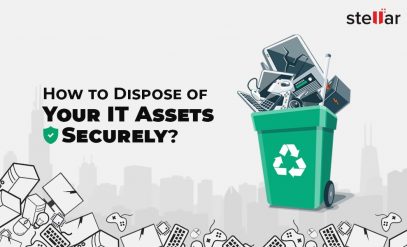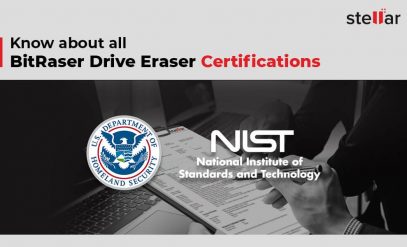| Summary: It is important to have a secure chain of custody during the IT asset disposal process. The lack thereof can leave you financially and legally vulnerable. Avoid that by understanding the details right here. |
|---|
Here’s the complete detail about the new draft privacy law.
The Digital Personal Data Protection Bill is just the beginning of what enterprises, big and small, can expect to face in case they are lax about data privacy and security.
It also shows likely outcomes if you don’t establish a secure chain of custody during IT asset disposal and data breaches happen.
It proves that disposing of IT assets requires proper planning, appropriate execution, and serious safety.
We will discuss in detail IT asset disposal and secure chain of custody in this blog and also highlights to avoid landing in situations like the NHS.
The blog will cover:
- What is IT asset disposal?
- What is a secure chain of custody in terms of IT asset disposal?
- The importance of maintaining a secure chain of custody
- How to ensure a secure chain of custody during IT asset disposal?
Read on.
What is IT asset disposal?
IT asset disposal is the process of deleting data or equipment that is no longer needed or usable. This process is also known as data destruction or equipment disposal.
The main goal of IT asset disposal is to protect sensitive data and ensure that equipment is properly recycled or disposed of. This process is important for all types of businesses. Proper IT asset disposal helps businesses protect themselves from data breaches. Consequently, it saves businesses from legal liabilities. This further helps maintains user trust and stakeholder confidence in the business.
There are many ways to dispose of data or equipment. Data can be erased, destroyed, or donated. Equipment can be recycled, refurbished, or disposed of.
No matter the process used for ITAD, it is important to make sure that the data and devices are in safe hands. Even after they leave the organization for data erasure or asset decommissioning.
What is a secure chain of custody?
A secured chain of custody is a system that is used to track and monitor the movement of evidence or items of value. This system is often used by law enforcement agencies to ensure that evidence is not lost, tampered with, or contaminated. For businesses and other organizations, a secure chain of custody in terms of IT asset disposal refers to ensuring that the devices and data are safe and not susceptible to leaks and theft after they’ve been sent out of the organization for disposal/decommissioning.
There are three main components of a secured chain of custody:
- Documentation
Paper proof of the transfer of devices and data.
Example: A written record of having sent the devices for disposal or an audit trail of data erasure.
- Controls
Checks are in place to make sure only authorized has access to the IT assets in question.
Example: The IT department head or CTO have access to the data erasure software where they can verify data erasures that have been done.
- Tamper-evident packaging
Ensuring that devices are not physically tampered with. This is done with the help of packaging such that it will show any signs of tampering.
Example: Using secure packaging material while the IT assets are in transit to the third-party IT asset decommissioning service provider.
The importance of maintaining a secure chain of custody
Most businesses (especially the smaller ones) are faced with a lot of IT costs. From equipment costs to the cost of clouds, servers, and software, there’s a lot that takes up the IT budget.
Add the cost of IT asset disposal and the expenses go way higher. Now, in such situations, most companies try to cut the slack and avoid any further charges. This is one of the key reasons why they ignore the need for a secure chain of custody.
But there are many reasons that should convince you otherwise. Some of the key reasons include
- A secure chain of custody ensures the security and integrity of your IT assets and data using equipment tagging and audit trails.
- With a well-documented IT asset chain of custody, you can avoid the risk of any falsification. It acts as a legal aide in case of data leaks and thefts.
- IT asset chain of custody also includes inventory tagging which ensures that your physical IT assets remained accounted for. This means you won’t face the issue of lost assets or damaged IT assets.
- Compliance with data protection and privacy regulations (such as NIST, GDPR, etc.)
And unless you are using a data erasure software like Bitraser for sanitizing your devices in-house, a secure chain of custody becomes important for IT asset disposal.
Now, if the benefits of having a secure chain of custody for your IT asset disposal process don’t feel convincing enough, here’s what you can expect in the absence of that. It will be:
- Impossible to guarantee that the data contained in the said IT assets were correctly, accurately, and safely erased.
- No way to find out if your business data or IT assets have been compromised. The longer the data/devices remain compromised, the higher the risk of financial and legal damage to your company.
How to ensure a secure chain of custody during IT asset disposal?
The financial repercussions of failing to ensure a secure chain of custody during IT asset disposal can be unnerving.
And if you don’t want your business to bear similar penalties and disgrace, here are some tips for ensuring a secure chain of custody during IT asset decommissioning:
- Clean your devices (with software that guarantees data erasure beyond recovery) before they are sent out for disposal or decommissioning.
- Tag all your IT assets and ensure that you have documentation regarding the owners/users throughout the entire device lifecycle.
- Ensure that users have access to only as much information as is absolutely required.
- Make sure IT asset decommissioning and data erasure are carried out at appropriate times.
- Ensure that the top IT personnel can remotely control and audit data erasure.
- Ensure there are tamper-proof audit trails for data erasure that can be used in internal and external audits and comply with national and international standards of data privacy.
- Ensure that the sanitization or destruction of data on all devices is done before they leave company control
- Work with a reputable IT Asset Disposal (ITAD) provider for secure data destruction and device recycling.
- Ensure that all devices are disposed of in an environmentally sound manner
Bitraser – certified data erasure software has a host of features that coincide with your need for a secure chain of custody.
- Erases data from loose hard drives, SSDs, Macs, servers, laptops, and desktops.
- Performs simultaneous high-speed erasing on up to 32 drive.
- 24 international erasing standards, including NIST, DoD, HMG, etc., are supported.
- Tamper-proof reports and certificates of erasure are generated for compliance.
With these features, you can rest assured about having no legal/financial complications while getting your data erased. Also, the devices don’t have to leave your custody so there is no need for securing the external chain of custody.







